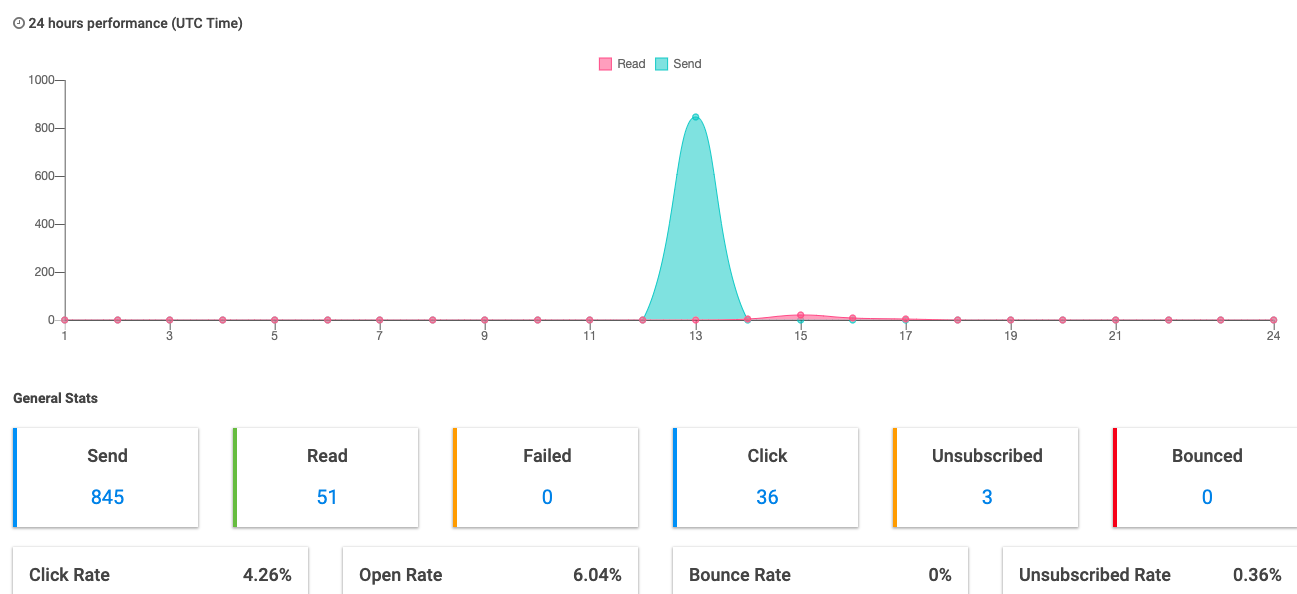Deliverability is a factor that includes a lot of essential elements that make it a complicated equation for users. But, we have got your back, and that is why this guide explains some best practices; these practices not only keep your business goals in mind but also leverage your email campaigns.
One thing that we expect from our users is – realistic expectations. Here is why – while switching to any new platform, trying out new strategies, or making any additional changes will have some amount of impact on the existing deliverability rate.
Deliverability is a metric to measure email success; as more people will open your email and engage with your content, the higher will be your deliverability rate.
So a sound plan would be to control as many variables as possible. Here are some factors that affect the deliverability rate:
- List quality
- Reputation
- Content
- Spam identification
And a lot more. Why we haven’t mentioned all of them is because the deliverability rate is not a one-time success. You have to depend on past results and add more factors to make sure it yields success. But then there are always some basics. Let us have a look at them.
Remember the basics
Now when it comes to inbox success, your emails should land anywhere but spam or trash folder. In popular email providers like Gmail, emails that get to the “Promotion” tab are still considered in a good position; and are deemed successful.
To better understand this, let us see various deliverability metrics:

1. Open rates: This is an indication of how many people have opened your email. However, this could be misleading; in the sense that it does not indicate if the contact has read your email or simply opened it.
2. Complaints rate: Now, this can be daunting, complaint rates indicate the messages that have been marked as spam. Marking messages as spam is usually done by people who did not get into the list organically. This usually happens when you purchase an email list. Aritic PinPoint always encourages the usage of opt-in forms through which only those contacts can make their way in who genuinely want your content.
So always prefer opt-in forms to avoid such circumstances and to skim further, go for double opt-in forms.
Now, when you have not opted for a list, yet, experience your emails landing in the spam folder, then it is advisable that you look into the message content and its frequency. Make sure your contacts are receiving the communication they want and not the generic messages.
3. Bounce Rates: This tells us how many emails failed to make it to the inbox or bounced. This harms your reputation as a sender. And this is yet another argument that makes ‘not having contacts’ a strong point.
4. Spamtrap Hits: A spam trap email is essentially the one that is unwanted. It will look like a standard email address but is not managed by anyone. An email is considered a spam trap when:
- It has typos, example: you want to send email to “xyz@aritic.com” but due to typos, you end up sending it to “xyz@artiic.com” so technically no one opted-in for it, so it will end up getting bounced
- Rotten emails: Say, for example, A used to get your messages and interact with it. But it has been a long that A stopped using that email, and now nobody accesses it; eventually, it will end up hurting your deliverability rate
- Purchased email lists: now this might be quite clear to you. With a purchased email list, you are sending content to all those who didn’t opt-in
Spamtraps are more likely to end up in your email list if you do not keep a regular check on them and do not refresh it periodically.
5. Delete without read rates: A large number of Email Service Providers (ESPs) are now tracking how many emails were deleted without being opened. So it is advisable to watch out and be selective with your email marketing campaign.
Migration challenges
When switching to Aritic PinPoint or any other service that delivers email, experiencing an initial dip in deliverability is natural. Your rates will eventually return to normal.
Factors that play a crucial role
- Developing a reputation with the new platform is imperative as your emails now come from a different IP address. Initially, you might experience soft-bounces or deletes, but that will eventually stop.
- Few businesses use new email services only because they intend to purchase fresh leads. Now, you might know by now that this does not help. And, you might unintentionally “hit spam traps”.
Following are some suggestions to minimize this dip:
- Take your campaign slowly and let it warm up before you start to send emails in large numbers
- Give some space to your content as well as the contacts to trust that it is actually you. They will eventually trust you because they have always enjoyed your content
- Design your initial emails for leads that are most active. This will boost your engagement rates.
Final takeaway: A simple solution
Achieving a high deliverability rate and being credible has always been the goal for marketers, but the parameters for this will continue to shift. The best part is, it rewards those marketers who send out authentic content to their contacts and receive loyal feedback. So the only thing that wins the deliverability is sound marketing practice.